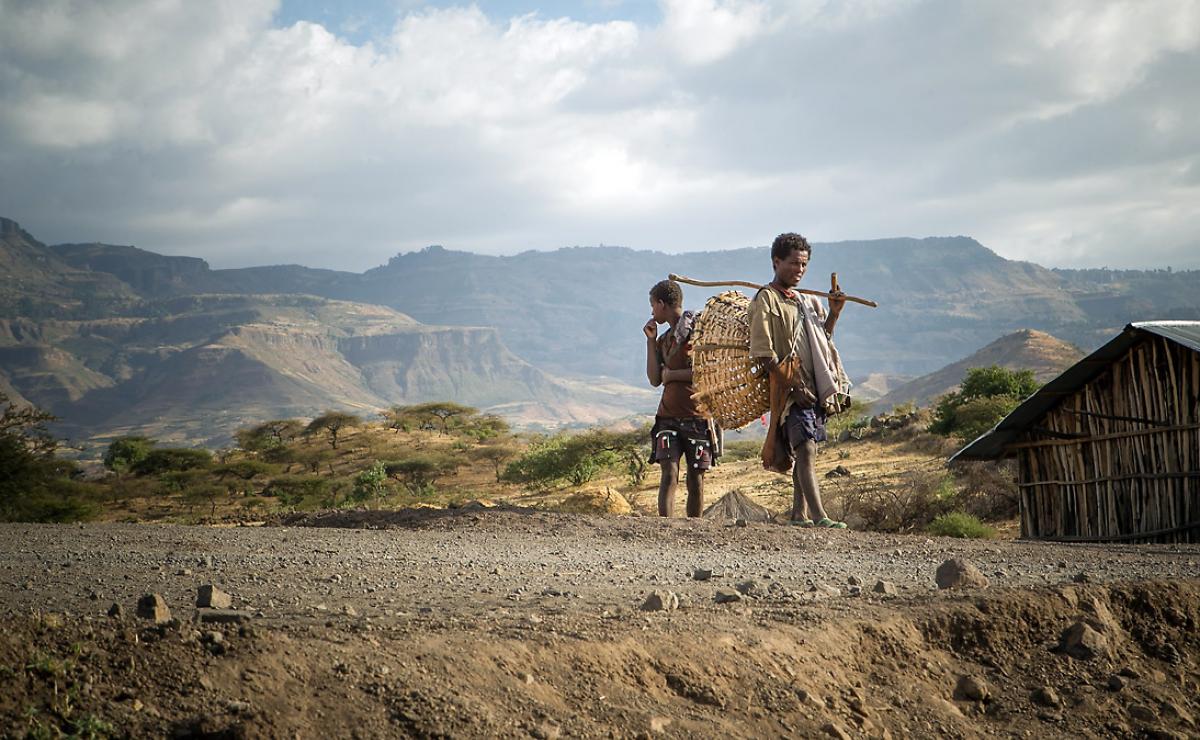The Road to Mote

In 1984, Adrienne Mornement was one of the nurses deployed with the LWF in the Ethiopian village of Mote during one of the worst famines the country had ever seen. Thirty years later her daughter, Hannah Mornement, travelled to Mote to see the progress made since that devastating famine. She talked to former beneficiaries and those taught how to look after themselves in the event of future extreme weather, such as the El Nino drought gripping the country now.
It was 1984. I was 14 and along with my sister, mum and dad watched in horror and disbelief at the now iconic report by Michael Buerk of the BBC from Ethiopia. His potent delivery and wording such as “a biblical famine” and “the closest thing to hell on earth” struck a chord with all of us, but especially so with my mother. She turned to us and said, “Would you mind, but I’d like to go and help”. Her great-aunt and uncle had been Baptist missionaries for over 40 years in Africa and, when my mother finished her nursing training at Addenbrookes Hospital in Cambridge, United Kingdom, she had decided that she too would go and work in Africa. Marriage and children put this thought on hold for the next 20 years until 1985. Her children now grown up, 15 and 17, she set about finding an NGO (non-governmental organization) which was recruiting nurses for Ethiopia, and was hired by the Lutheran World Federation.
A few months later and she was gone. She took leave from her career as a staff nurse of the Intensive Care Unit at Epsom District Hospital, UK, and swapped her urban daily commute for the green hills and muddy roads of Africa. It was here, 30 years ago in a little village called Mote, that she started to write a diary for the first time. Frank and, at times, starkly matter of fact, many questions emerge which are more apparent to the reader than the author. It was in these diary entries that we are given an insight into the true horror of the famine. For the six months my mother was deployed it rained heavily for almost 90% of the time, making travel to and from the feeding stations an almost impossible task - not to mention the struggle of the beneficiaries.
But this isn’t a story just about petticoats and mud.
Thirty years later I travelled back to Mote, to start my documentary and see firsthand the progress made since that devastating famine. I was able to find and talk to those who passed through the feeding program and those who worked alongside my mother and were taught how to look after themselves the next time they were struck by famine.
This month I will return to Mote with her diary.
The Road to Mote is about a journey that started in 1985. A journey that left questions unanswered. Did we really 'feed the world'? What legacy did we leave behind? What impact did a staff nurse from Ashtead have on those she helped?
I aim to weave in and out of the past 30 years, taking a look at the way humanitarian aid has produced sustainable change in a village that became such a large part of my mother's life, and remaining conscious that many of the mothers, not much older than I was at the time, were facing conditions unthinkable to me.
Hannah Mornement’s mother Adrienne worked with LWF Ethiopia from 1984-1985.

